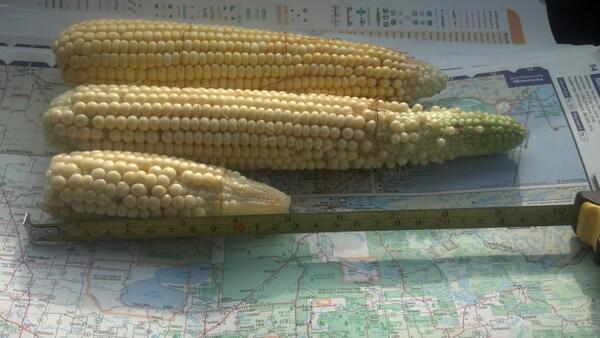Grain markets closed weaker today in choppy trade.
Corn was down 3 cents, KC wheat was 9 lower, MPLS wheat was
8 lower, CBOT wheat was a dime lower, Jan soybeans were down 2, the US Dollar
off 400 ticks or so with the March futures at 80.440, crude is at 97.50, gold
was off 22 bucks, and the DOW closed down 68 points.
Follow up selling for wheat today from the announcements the
past few days that include bigger crops in Australia and Canada. Plus no nearby issues for the wheat crop in
the U.S. It might not pencil out very
good for producers trying to make a profit but the market doesn’t seem to care
about that.
We did have export sales out this a.m. and considering it
was a holiday week last week they were not super bad but overall they were on
the disappointing side and didn’t help the bulls out at all today.
We did have corn and beans manage to get back to unchanged a
couple times during the session but when the markets closed they both ended in
the red.
Technically you can find both some positives and negatives
when looking at the charts. You have some of the wheat charts back down
towards some major support that hopefully holds. But if it doesn’t it could really open up
further technical downside. You have soybean
charts that have moved a little range bound the past few days and corn charts
that had a very positive close early in the week. But today’s price action for corn opens up
the question as to was today a small breather/correction before moving higher
or have the last few days been a breather before resuming the selling pressure????
Only time will tell for sure and it probably depends on what
type of info the USDA puts out next week in their report.
Speaking of the report, CHS Hedging did release their pre-report
ideas for next week’s USDA report. Tim Emslie who is CHS Hedging Research Manager wrote up the comments for the
pre-report ideas; he along with DTN Senior Analyst Darrin Newsom are our two speakers for the
marketing meeting we are sponsoring this winter. It is in Pierre at the Ramkota at 10 a.m. on January 20th.
Here is the link to the info. https://www.chshedging.com/UserFiles/Documents/2013/Pre%20USDA%20Report%20Comments/120513.pdf
You will see that they are on the bandwagon of smaller
carryout numbers do to strong demand. But
how much of that demand is because of the season (harvest)? Also one needs to question what a couple
things are doing to demand. First off
what is the producer holding pattern doing to demand? Yes there is demand for products at present
price levels; but if the American Farmer doesn’t sell do the buyers find a
replacement of some sort?
How about the horrible freight/slow moving trains? As example I feel if mother nature would have
cooperated a little more and if trains would have showed up a little faster
that our elevators could have handled much more at harvest. But things didn’t come together………….will the
demand still be there later when the product wants to move is the question?
I have seen a few more orders pick up for the birdseed
industry; but overall things are still slow. We really need a little more demand.
Wheat basis, corn basis, and cash values in general seem to
be all over the board. I do like the
idea of having some offers out there because of how volatile freight and basis
is. It helps us know what type of
numbers we should be offering when we get someone looking to buy and that is worth
a lot for end users. To get coverage
without having to call 100’s.
Please give us a call if there is anything we can do for
you.
Thanks

 Tony McDonald
Tony McDonald Carlos Aguilar
Carlos Aguilar DuPont Pioneer
DuPont Pioneer

 Terry Johnston
Terry Johnston

 Whitney McFerron
Whitney McFerron Farm Journal
Farm Journal  Emily Flory
Emily Flory Brennen Toquam
Brennen Toquam John Moore
John Moore OCJ & Ohio Ag Net
OCJ & Ohio Ag Net Ty Higgins
Ty Higgins Marcio Castelloes
Marcio Castelloes Karen Braun
Karen Braun Janice Kincheloe
Janice Kincheloe Mark Bernard
Mark Bernard Todd Calfee
Todd Calfee


 Todd E. Gleason
Todd E. Gleason Aaron Combs
Aaron Combs Michael Hirtzer
Michael Hirtzer Paul Neiffer
Paul Neiffer Chris Narayanan
Chris Narayanan CHS Hedging Inc.
CHS Hedging Inc.